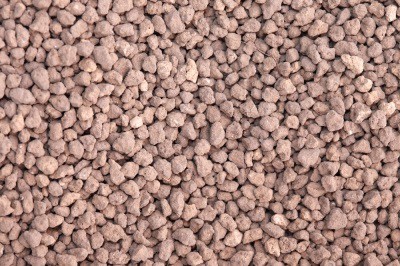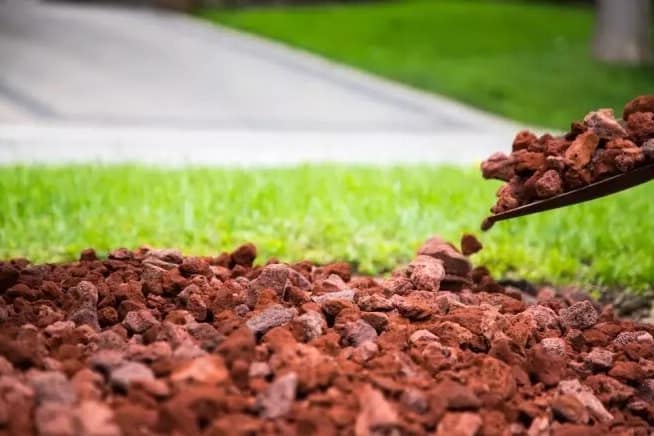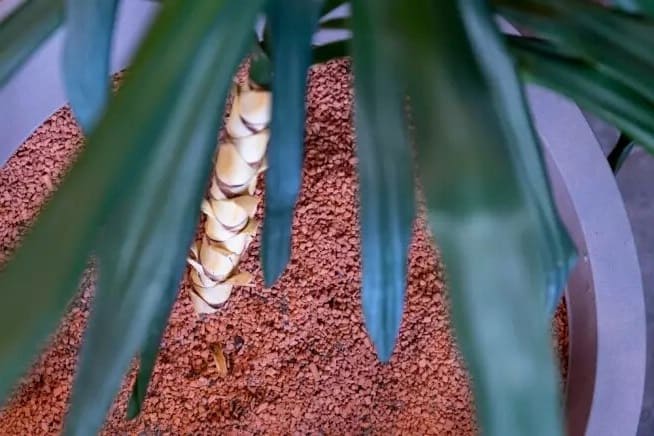The Power of Lava Rock for Improved Soil
Did you know that granulated, cooled lava can be a helpful and flexible material for homeowners and garden enthusiasts? Lava rock is becoming increasingly popular as a soil additive due to its ability to revitalize plants, serve as a dependable filter, and even add a touch of creativity to your designs. In this guide, we will explain why using lava rock as a soil additive is a wise choice.

The Essentials in Brief
- Lava rock granules are great because they don’t rot, and they allow water and air to flow through easily.
- You can use lava rock granules in various ways: to cover garden beds, create pathways, enhance the soil quality, or simply as a decorative element.
- When using lava rock for indoor plants, you’ll need to mix 1 part of granules (sized between 2 to 8mm) with 4 parts of potting soil.
What Is Lava Rock Used For?

Lava rocks are formed deep within the Earth’s core and have amazing strength and durability. When crushed, they become a versatile natural product that can be used in many useful ways. Lava rock has unique characteristics that make it a valuable material. It’s porous, allowing for air and water to pass through, and it doesn’t decay over time. In the table below, we have summarized some clever ways you can utilize lava granules:
| Garden | Plant Care | Pond / Aquarium | Grit |
|---|---|---|---|
| Bed cover | Potting soil aggregate | Plant substrate wet zone | Road salt substitute |
| Path reinforcement | Weed suppression | Decorative element pond edge | Grit on snow |
| Soil improvement | Drainage in pots | Filter medium | |
| Design element | Water retention | Substrate in the aquarium |
Lava rocks excel at their jobs when you combine various grain sizes ranging from 2 to 16 mm. The unique shape of the stones allows them to interlock and fit snugly together. This easy technique enhances their effectiveness in garden beds, as a filter medium, a substrate for plants, or even as a spreading material.
How To Use Lava Rocks For Plants
1. Using Lava Rock as a Soil Additive
Using lava rock as a soil additive is like having a secret weapon for hobby gardeners. This natural product is versatile and can help solve various problems in your garden. Lava rock is sturdy, allows water to pass through easily, allows air to reach the roots, and can withstand wear and tear. It even acts as insulation for the soil.
Unlike sand, gravel, grit, or crushed stone, lava rock is lightweight and simple to spread. Most importantly, lava rock gets along well with all the plants in your garden. Here are some common ways you can use lava rock in your garden:
- Suppressing weeds: Use lava rock in beds, under hedges, trees, or even in grassy areas.
- Loosening compacted soil: Add lava rock as an aggregate to heavy, waterlogged soil to help improve its structure.
- Plant base: Create a stable base for roses, shrubs, conifers, vegetables, flowers, and perennials using lava rock.
- Ground reinforcement: Use lava rock on access routes, driveways, work areas, or seating areas for better stability.
- Heat storage: Lava rock can store heat during the day and release it at night, benefiting neighboring plants.
- Preventing erosion: Place lava rock strategically to prevent soil erosion during heavy rain or thunderstorms.
In the summertime, lava rocks also work as mulch, reducing the evaporation of water, and helping to keep the soil moist and cool for a longer period—something your plants will thank you for.
2. Using Lava Rock for Plant Drainage

When it comes to using lava rock as a component in plant substrates, both plants and gardeners can enjoy numerous benefits. By adding a few handfuls of lava rocks to potting soil, it becomes loose and airy. These porous grains are helpful if you sometimes forget to water your plants since they can release stored water to the roots. Additionally, if you accidentally overwater, having a layer of lava rock at the bottom of the pot acts as drainage and prevents waterlogging.
For your balcony and indoor plants, use lava rocks with grain sizes between 2 to 8 mm as an aggregate in the substrate. A commonly used ratio that works well is 4 parts potting soil to 1 part lava rock. Before you plant, place a one-inch layer of lava rock at the bottom of the pot or container. It’s ideal to cover this layer with a water and air-permeable fleece. This trick prevents the soil from settling between the lava rocks, which could block the drainage. Moreover, the inorganic nature of lava rock keeps it clean, so you can reuse it after repotting your plants.
Where to Buy Lava Rocks
Here are some options for buying lava rocks:
- Local hardware stores like Home Depot, Lowe’s, Ace Hardware, Menards, and Wal-Mart usually have lava rocks available. However, they might sell it more commonly as grit or as an additive in high-quality soil for specific types of plants like cacti and Mediterranean plants.
- Online retailers like Amazon and eBay also offer lava rocks for purchase.
- You can also check out garden centers and landscaping companies as they might have lava rocks available.
It’s worth noting that the best time to find lava rocks in local stores is during late autumn and winter. Smart hobby gardeners often buy them in large quantities, either in big bags or as bulk goods, at a significantly lower price. If you have the means to transport them, such as with a trailer, purchasing from a local supplier can give you an advantage.
FAQ’s
What is lava rock?
Lava rock is a completely natural material formed from solidified lava. It has some excellent qualities such as being lightweight, allowing water to pass through easily, and containing high mineral content. Unlike other materials, lava rock does not have any odor and does not decay. These characteristics make it perfect for improving soil, adding to potting soil, and using as grit during the winter. It is also popular as a filter medium in ponds and aquariums. Lastly, colorful lava rock can be used creatively to reinforce natural ground in garden design.
How do I correctly use lava rocks for weed control?
Using lava rocks effectively to combat weeds relies on selecting the right grain size and layer thickness. In the garden, a grain size of 8 to 16 mm has proven to be effective. Spread a layer of mulch about 6 to 8 cm thick in your garden bed for efficient weed control. Coarser grains and thinner layers give weeds more space to grow, so it’s best to avoid them.
Final Words
Lava rock is gaining popularity as a natural ground reinforcement method, potentially replacing traditional bark mulch. This natural material does not rot, has no odor, is durable, and does not release nutrients into the soil. With a variety of warm colors available, lava rock mulch is an excellent choice if you’re planning a front yard, prairie garden, or farm garden design.
